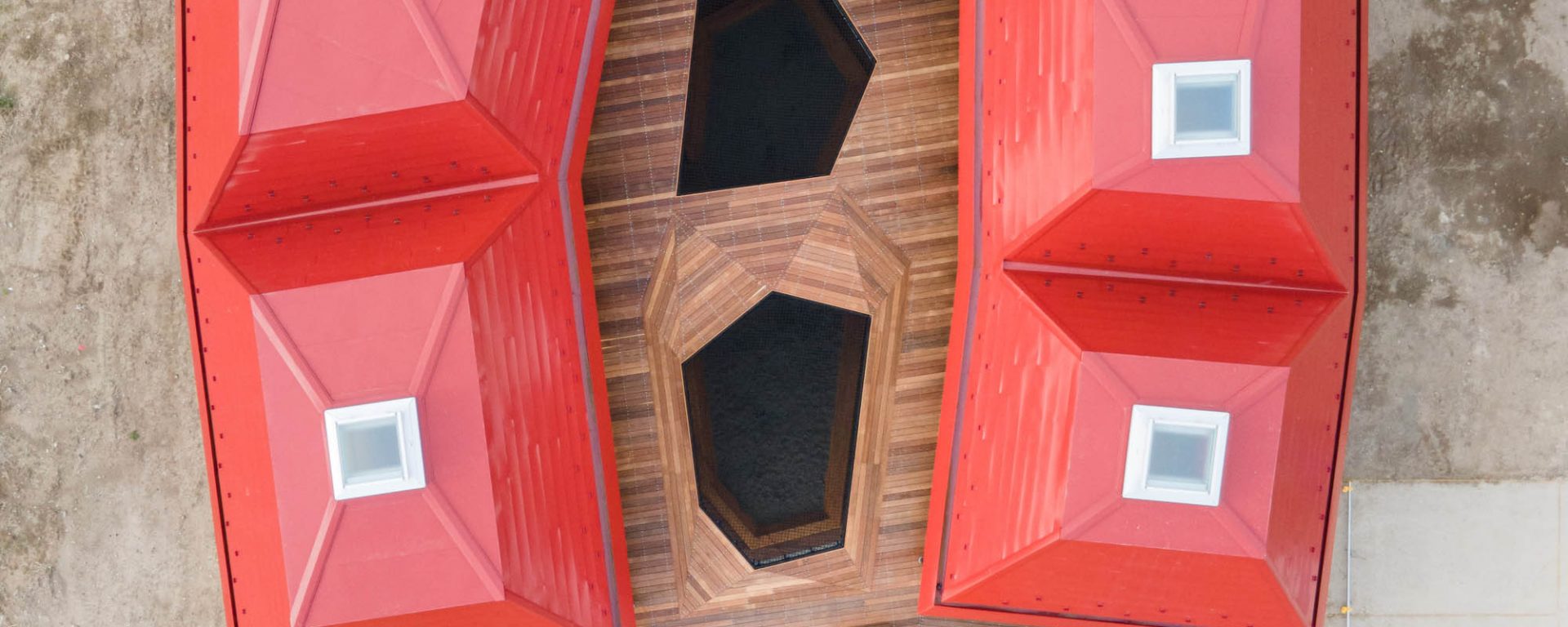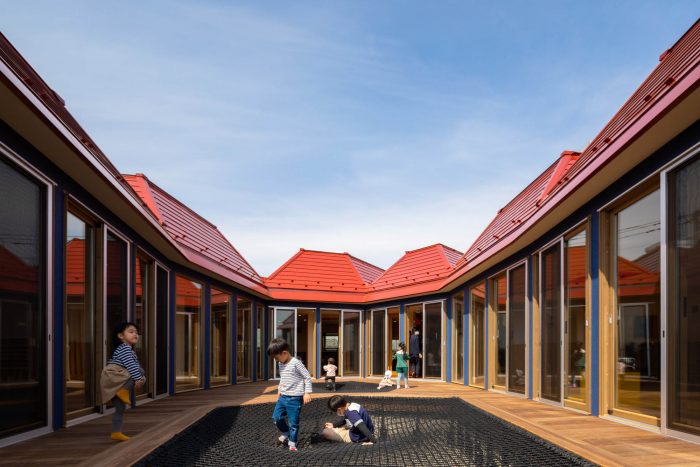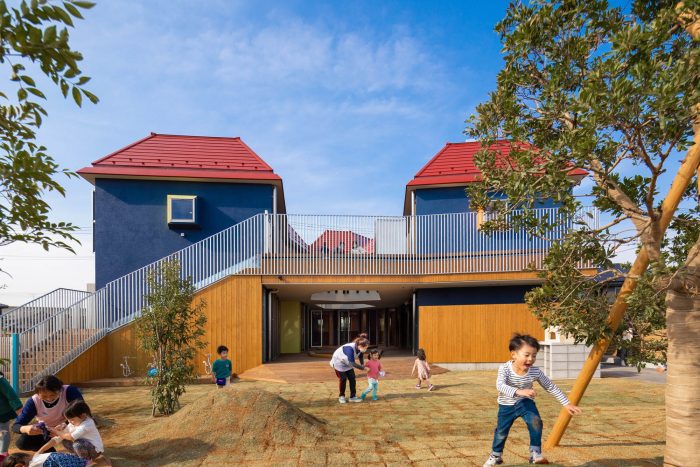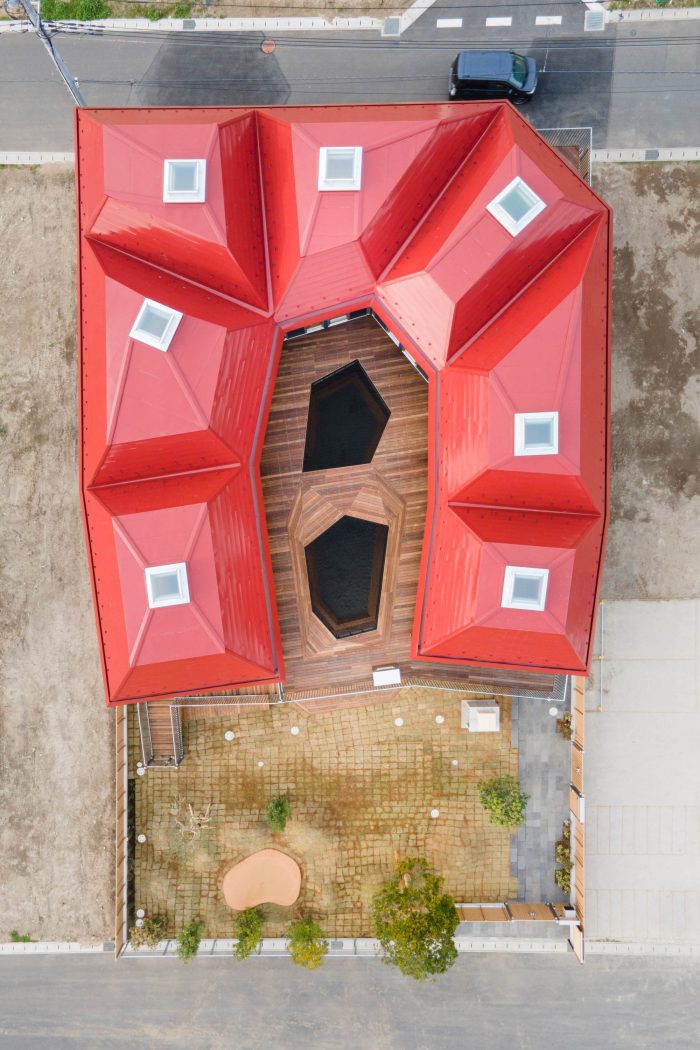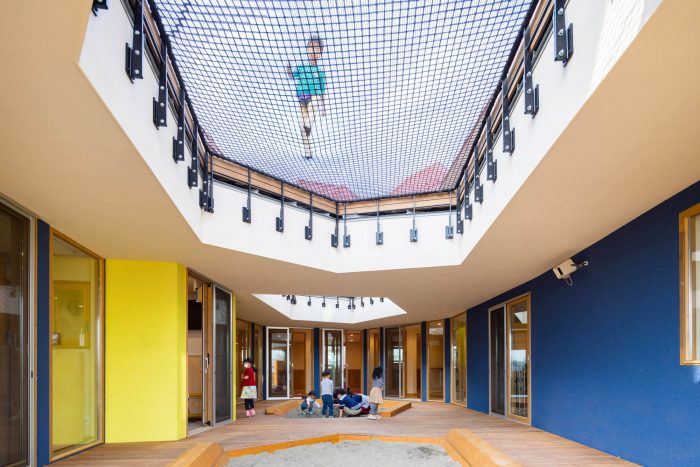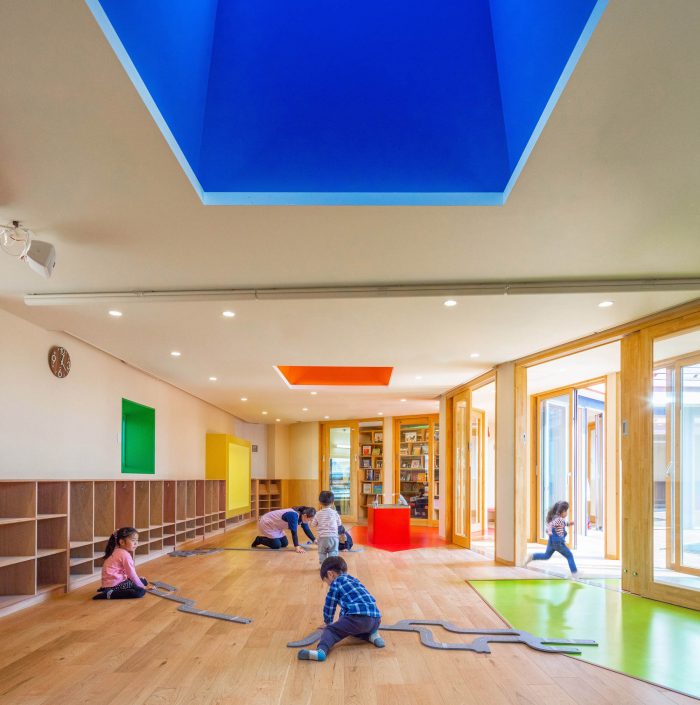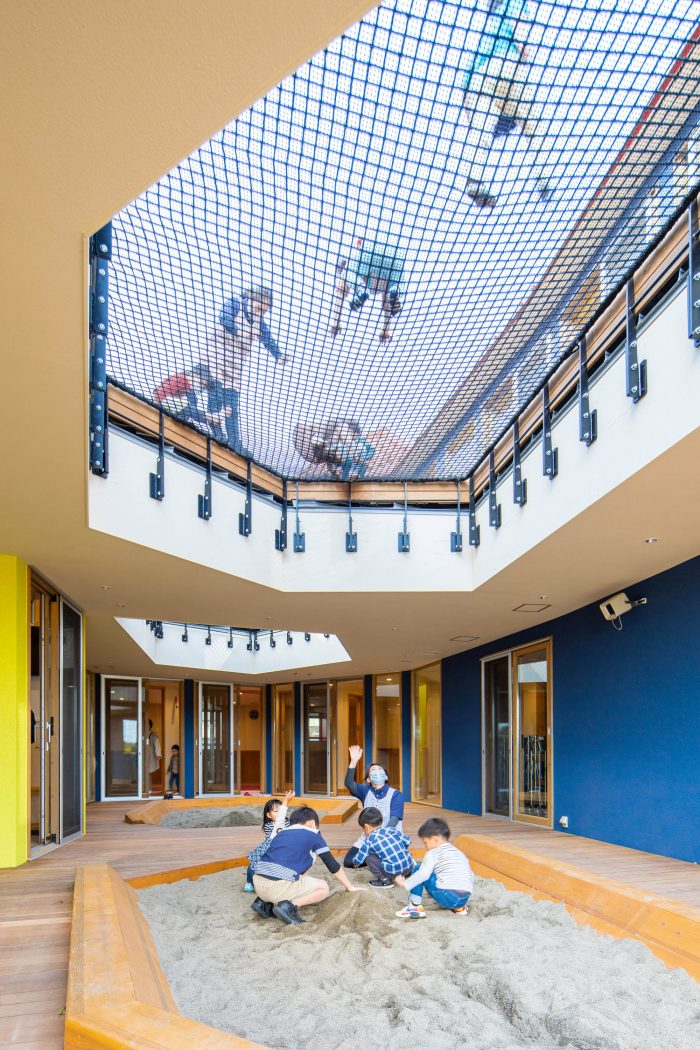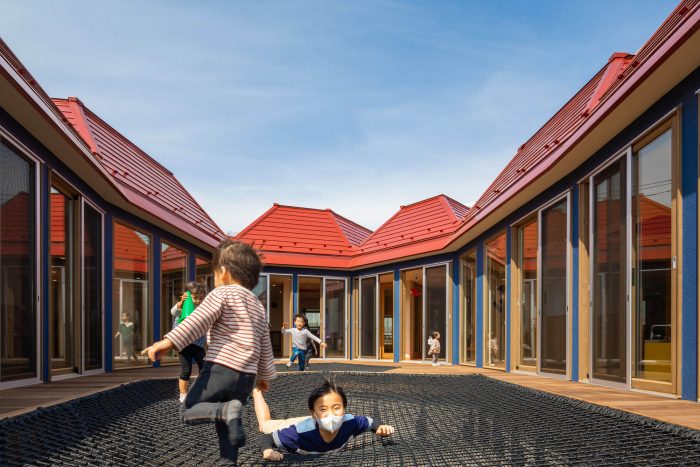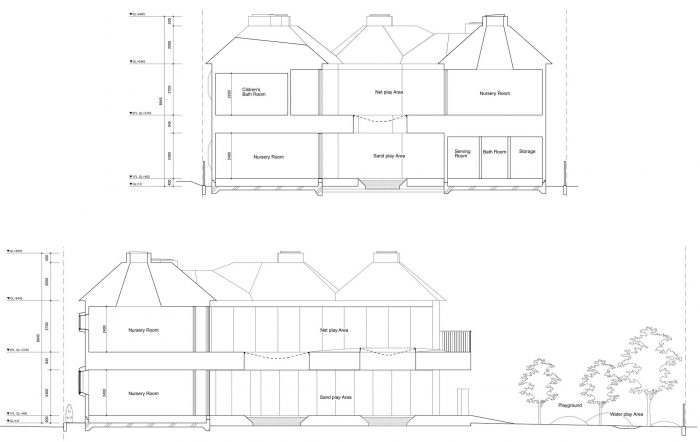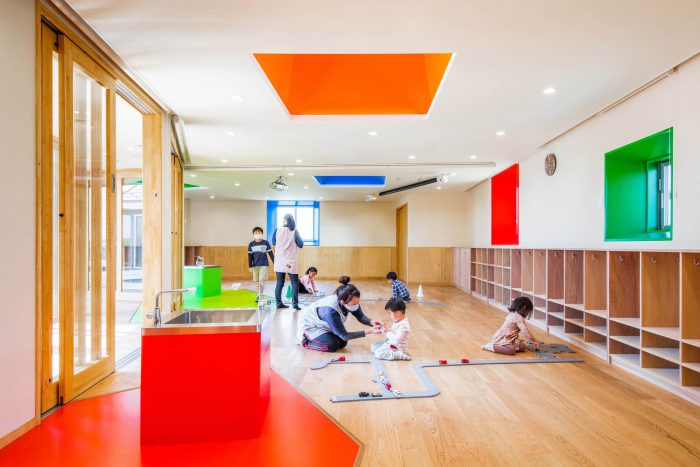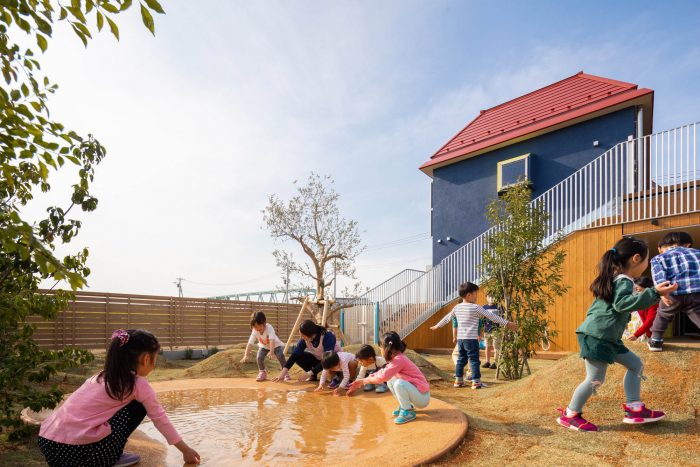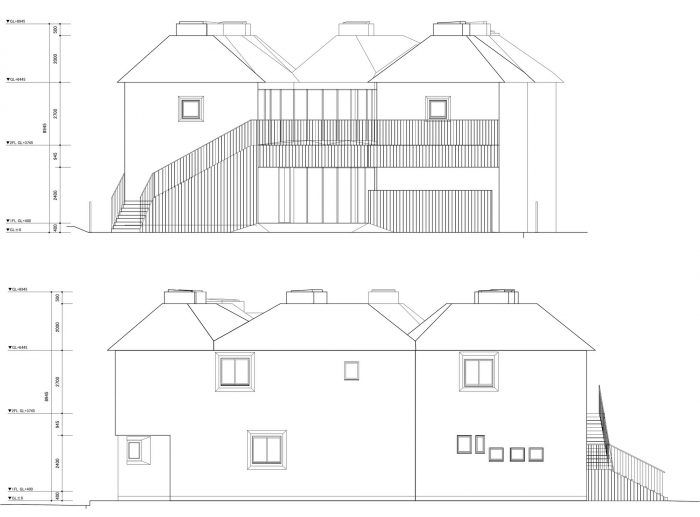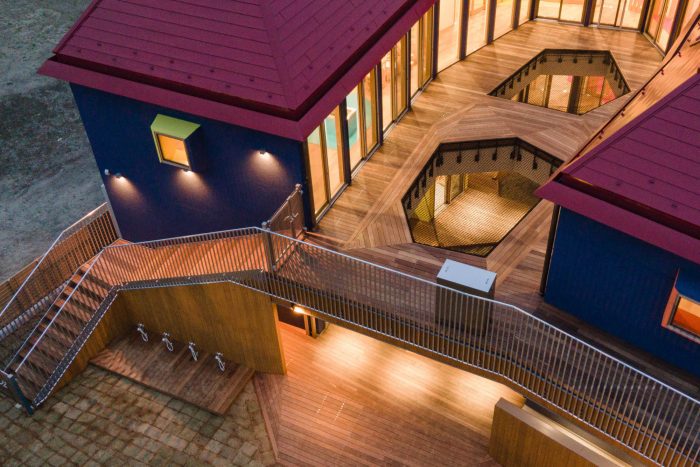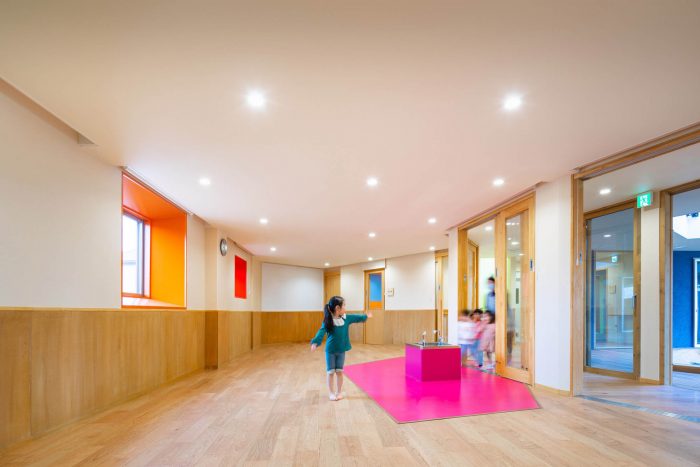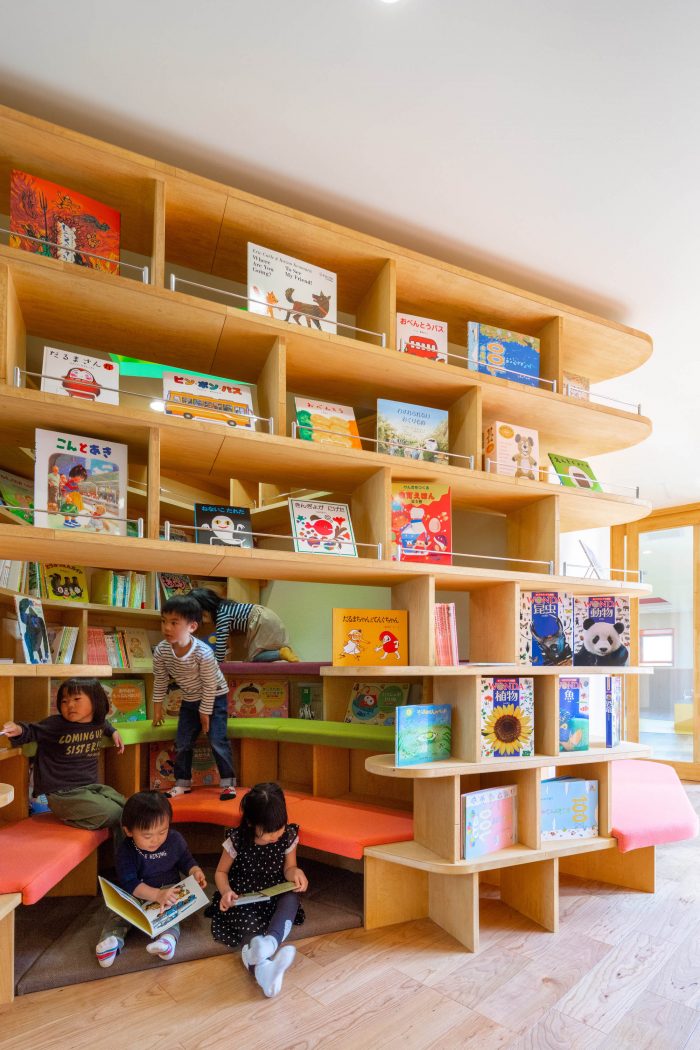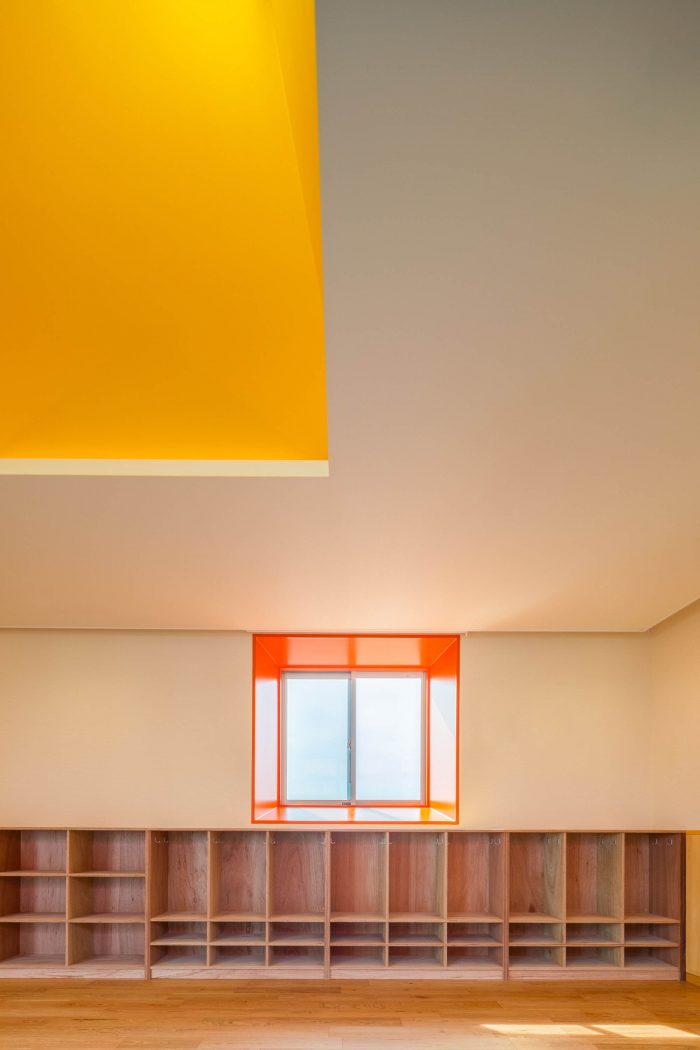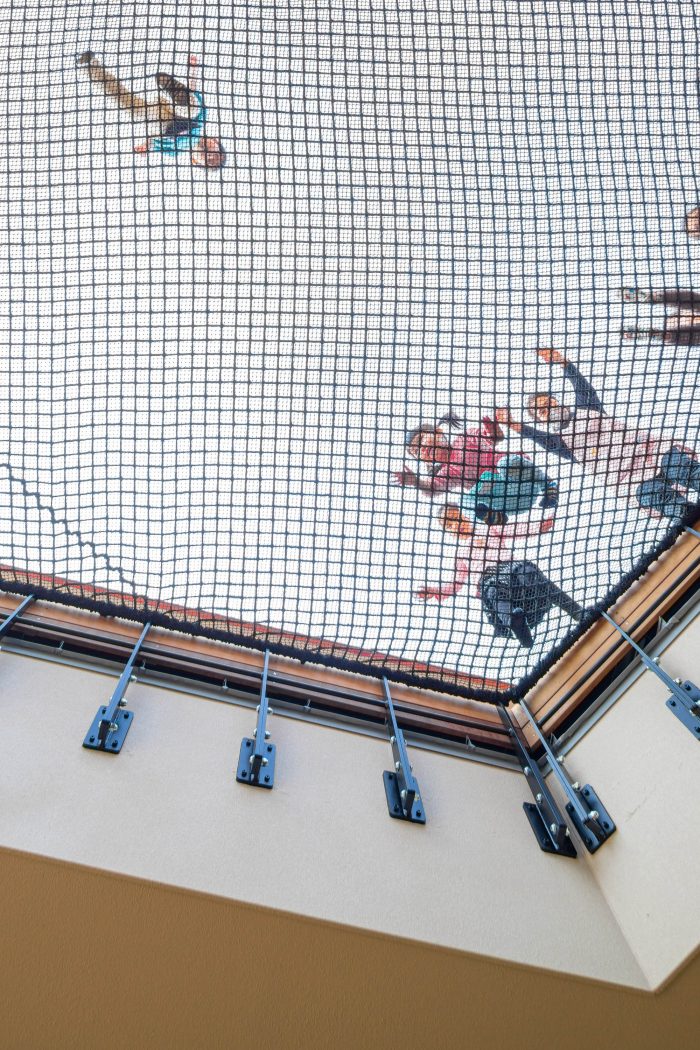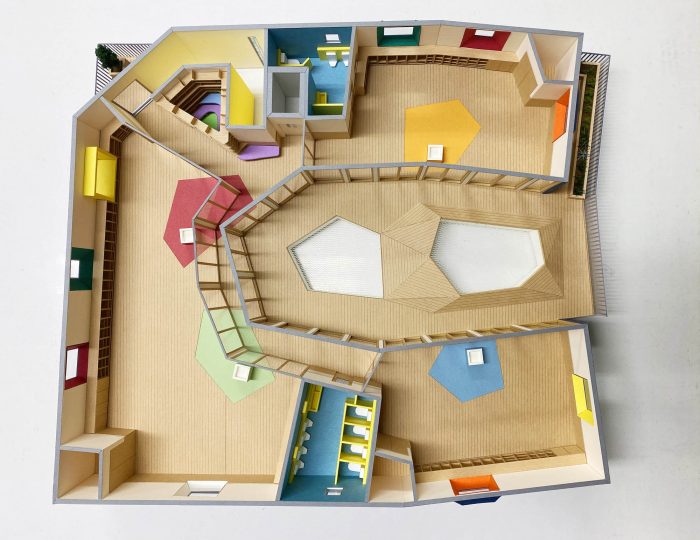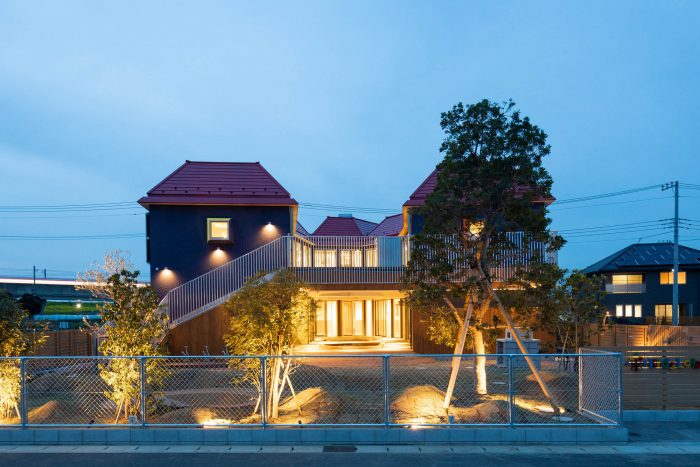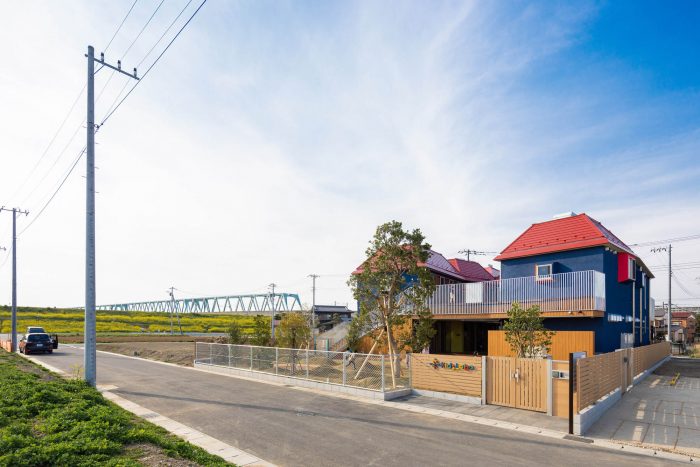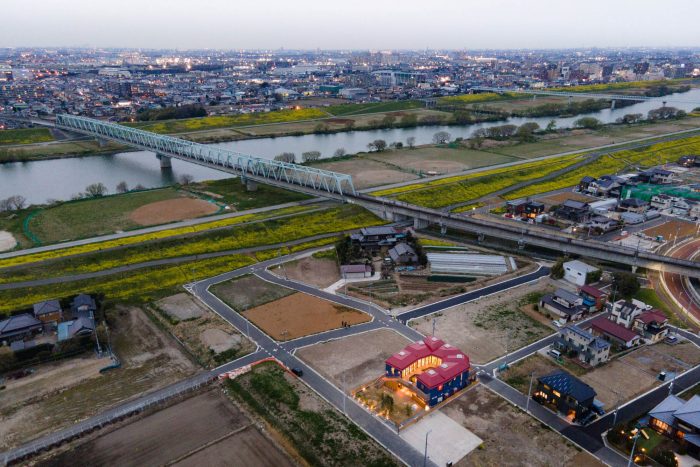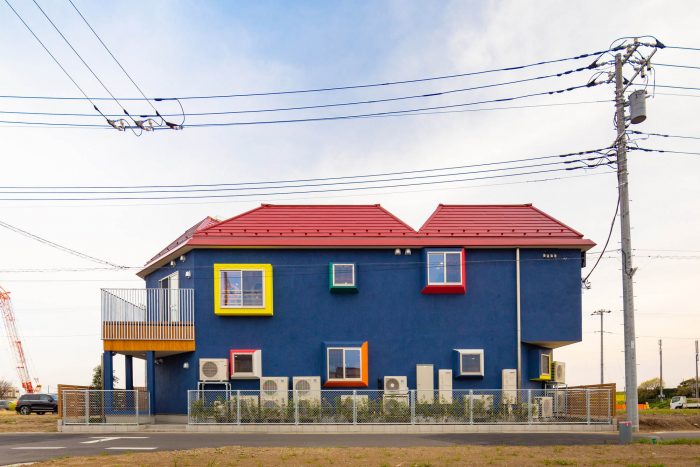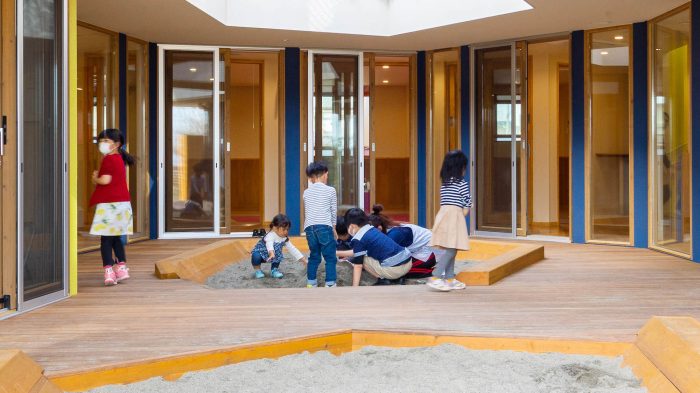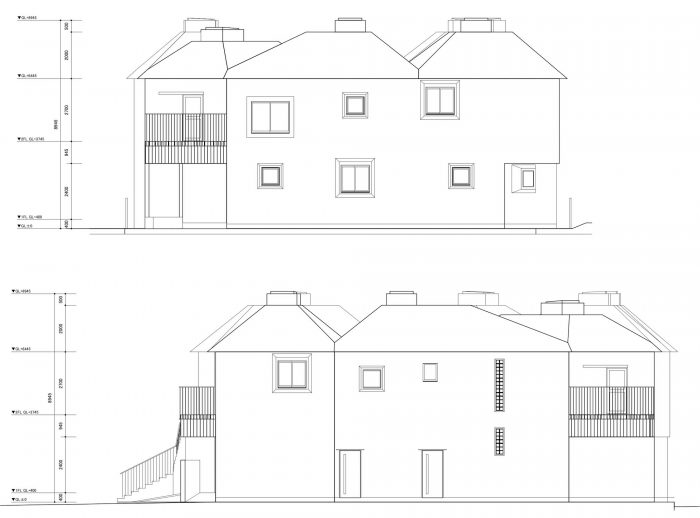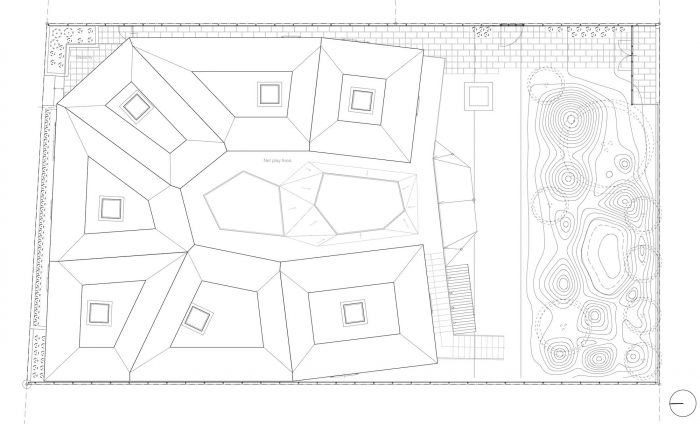幼儿教育在信息社会中的地位。
在信息社会中,我们的工作方式不断发生着巨大的变化。不再像信息社会之前那样,从入职到退休一直从事同样的工作或职业,而是需要改变工作职能,与来自不同领域的人合作(共同创造),以实现某种目标。在这样的时代,我们认为,我们需要从幼儿时期就开始肯定多样性的场所,让孩子们体验与不同的人相处的场所
A Place for Early Childhood Education in an Information Society
In an information society, the way we work continues to change dramatically. Rather than continuing to work in the same job or occupation from the time you start until retirement, as was the case before the information society, there is now a need to change your job function and collaborate with people from different fields (to co-create) in order to realize something. In such an age, we believe that we need places that affirm diversity starting in early childhood, places where children can experience spending time with a diverse array of people.
信息社会所需要的能力之一是空间意识。在环境复杂导致身体不稳定的地方,如多维森林、山地,仅靠视觉很难理解整个空间,相信可以同时训练身体和大脑的能力。一个空间是一个可以对那里的其他人产生影响改变的区域。如果创造了一个肯定多样性的空间,这个空间里的人就会肯定多样性。而如果创造了一个鼓励在不稳定的环境中运动的空间,人们自然会形成更大的空间。在这个幼儿园里,我们希望让孩子们获得信息社会所需要的经验和思维方式。
One of the abilities needed in an information society is spatial awareness. It is believed to be possible to train the body and brain at the same time in places where the body is unstable due to a complex environment, such as multi-dimensional forests and mountains, where it is difficult to comprehend the entire space by sight alone. A space is an area where you can affect change on the other people there. If a space that affirms diversity is created, the people in that space will affirm diversity. And if a space that encourages movement in unstable environments is created, people will naturally develop greater spatial. In this nursery school, we hope to give children the opportunity to gain the experience and mindset needed in an information society.
KidsLabo南长山幼儿园的设计理念。
1. 分散但共享的空间
这是一个自成一体的多边形空间,孩子们可以在这里共同享受各种活动。在信息社会,不同技能的人需要在同一个地方共同思考。与其说大家都在做同样的事情,不如说大家在各自发展的同时,还能共享同一个空间。由于一个多边形的空间没有明显的中心,所以空间里有很多不同的区域。正因为如此,人们在共享同一空间的同时,可以从事不同的活动。
Concept of design for KidsLabo Minami-Nagareyama Nursery
1. A Scattered but Shared Space
This is a self-contained polygonal space where children can enjoy various activities together. In an information society, people with different skills need to think together in the same place. Rather than everyone doing the same thing, we need to be able to share the same space while developing individually. Since a polygonal space does not have an obvious center, there are many different areas in the space. Because of this, people can engage in different activities while sharing the same space.
2. 共享无界空间
有一个完全在建筑外的外园和一个部分在室内、部分在室外的内园。在外园玩耍时,外园和内园的边界变得模糊不清。而在内园玩耍时,室外和室内的区域融合在一起。内园与室内相连,所以每个空间的人都能清楚地看到其他区域。在内园玩耍的孩子和在室内房间玩耍的孩子可以在一起,进行不同的活动,如果他们觉得喜欢,室内的孩子可以到外面和其他孩子一起玩,有时是不同年龄段的孩子。内园的存在,在室内和室外之间形成了一个暧昧的游戏空间。
2. Share a Space without Borders
There is an outer garden completely outside the building and an inner garden that is partly indoors and partly outdoors. When playing in the outer garden, the borders between the outer and inner garden become blurred. And when playing in the inner garden, the outdoor and indoor areas blend together. The inner garden is connected to the indoor rooms, so people in each space can see the other area clearly. The children playing in the inner garden and the children playing in the indoor rooms can spend time together, engaging in different activities, and if they feel like it, children indoors can go outside to play with other children, sometimes children of different age groups. The presence of an inner garden creates an ambiguous space to play in between the indoors and outdoors.
3. 每天用身体思考
操场上很少有平坦的地方,到处都是凹凸不平的表面和柔软的网状物,是一个立体的空间,需要运用全身的力量去玩。信息社会需要的一种能力是空间意识,据说在三维空间中要同时使用大脑和身体,才能训练出空间意识。城市因为道路的发展有利于车轮,所以到处都是平面。但在幼儿园的日常生活中,我们希望通过增加立体空间的数量,让孩子们培养出信息社会所需要的空间意识能力,而这种能力在城市中是不容易得到的。
3. Thinking with the Body Daily
There are very few flat areas in the playground, which is filled with uneven surfaces and soft mesh nets, making it a three-dimensional space that requires the use of the whole body to play. One ability needed in the information society is spatial awareness, which is said to be trained by using the brain and body simultaneously in three-dimensional spaces. Cities are full of flat planes because of the development of roads to be conducive to wheels. But by increasing the number of three-dimensional spaces in the everyday life of a nursery school, we hope that children can develop the spatial awareness skills needed in an information society, which cannot be easily obtained in the city.
4. 一个由你制定规则的环境
在校园里,只有山、沙、水。每一种情况都没有固定的解决方案。在这个简单的环境中,孩子们可以一起想出自己的规则,并进行游戏。
4. An Environment where You Make the Rules
In the schoolyard, there are only mountains, sand, and water. There is no set solution in every situation. In this simple environment, children can work together to come up with their own rules and play.
5. 不一样也没关系
这个空间使用的颜色尽量不协调。我们的目标是创造一个能让人们认识和接受不同个性的空间,只要身处其中,就能感受到与众不同是可以的。
5. It’s OK to be Different
The colors used in this space are as uncoordinated as possible. Our goal is to create a space where people can recognize and accept diverse personalities, where just by being there, they can feel that it is OK to be different.
6. 留下痕迹的地方
我们创造了一个可以找到游戏痕迹的地方。幼儿园门口有一个沙箱。当一个孩子玩耍时,就会留下他们玩耍的痕迹,而当另一个孩子玩耍时,沙箱的变化就更大了。等到晚上家长来接孩子的时候,沙箱里就会有各种孩子一天玩耍的痕迹。
6. A Place where Traces Remain
We have created a place where the traces of play can be found. There is a sandbox at the entrance of the nursery school. As one child plays, traces of their play are left behind, and as another child plays, the sandbox changes even more. By the time parents come to pick up their children in the evening, the sandbox is filled with the traces of various children who have been playing throughout the day.
7. 幼儿园的面貌
这所幼儿园位于一个典型的新建住宅区,周围的建筑大多由同龄的房屋建筑商设计。为了使建筑与周围建筑的建筑形式保持一致,我们采用了坡屋顶的设计,窗户的尺度也被设计成与周围建筑一致。我们将臀部屋顶设计成多个屋顶的集合,而不是单一的屋顶,以表达多人相互协商、共同思考的理念,而不是一个人单独思考。结构的设计是为了呼应人们一起讨论,围着内侧一圈 外墙有独特的窗户。通过让窗户向外突出,我们可以让外面的世界显得更神秘一些。屋顶也有天窗,让大量的自然光进入空间。
7. The Face of the Nursery School
This nursery school is located in a typical new residential area, with the majority of the surrounding buildings designed by housebuilders of around the same age. In order to create a building that is consistent with the architectural form of the surrounding buildings, we adopted a hip roof design, and the scale of the windows was designed to align with those in surrounding buildings. We designed the hip roof as a collection of multiple roofs rather than a single one in order to express the idea of multiple people consulting with one another and thinking together, rather than a single person thinking alone. The structure is designed to echo people discussing together in a circle around the inner The exterior wall has distinctive windows. By making the windows protrude outward, we can make the outside world seem a little more mysterious. The roofs also have skylights that let lots of natural light into the space.
建筑师: teamLab Architects
面积 : 497 m²
年份:2021年
摄影:Vincent Hecht
客户: KidsLabo Incorporated
城市:Nagareyama
国家:日本
Architects: teamLab Architects
Area: 497 m²
Year: 2021
Photographs: Vincent Hecht
Clients:KidsLabo Incorporated
Architects:teamLab Architects
City:Nagareyama
Country:Japan

